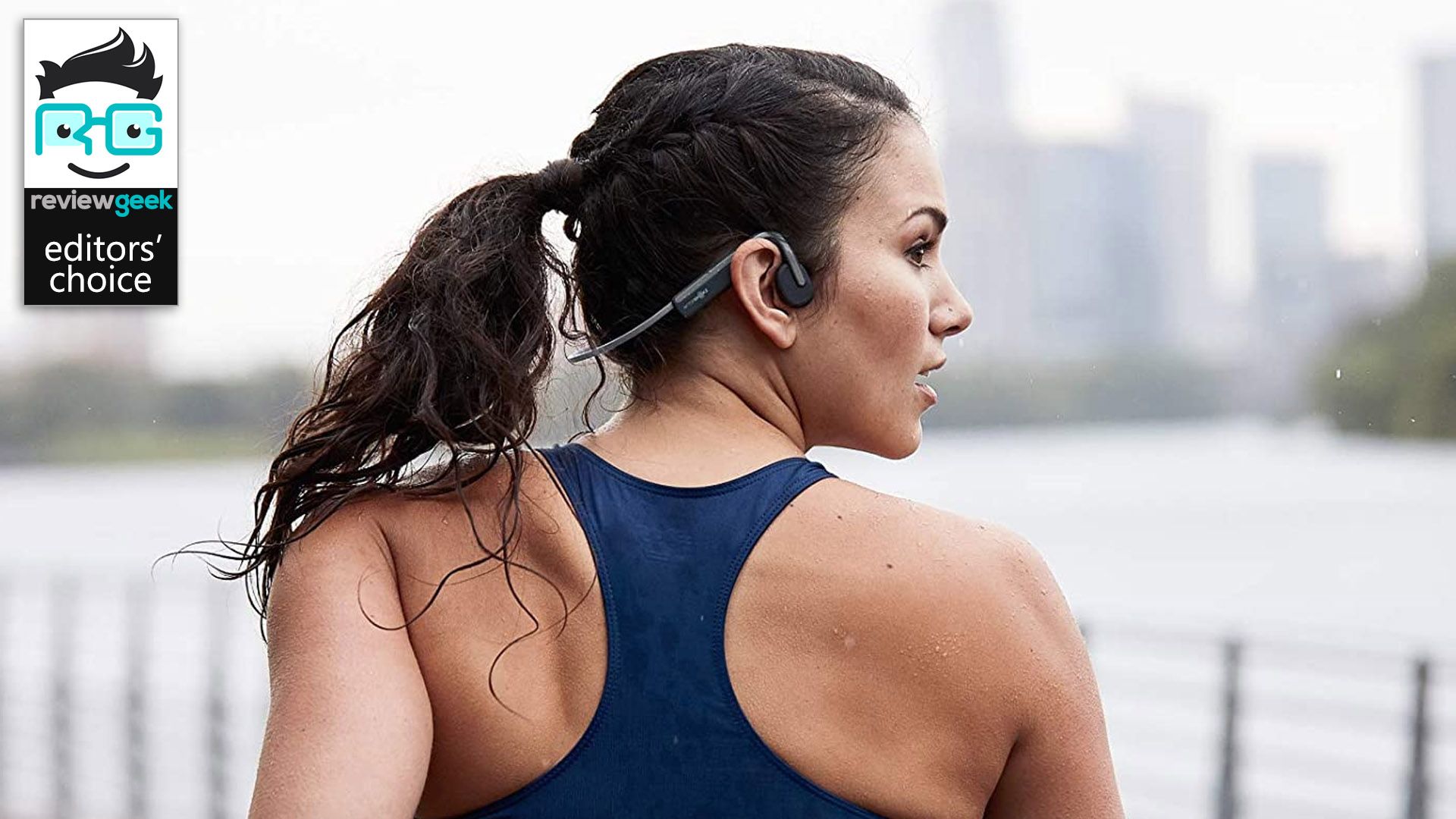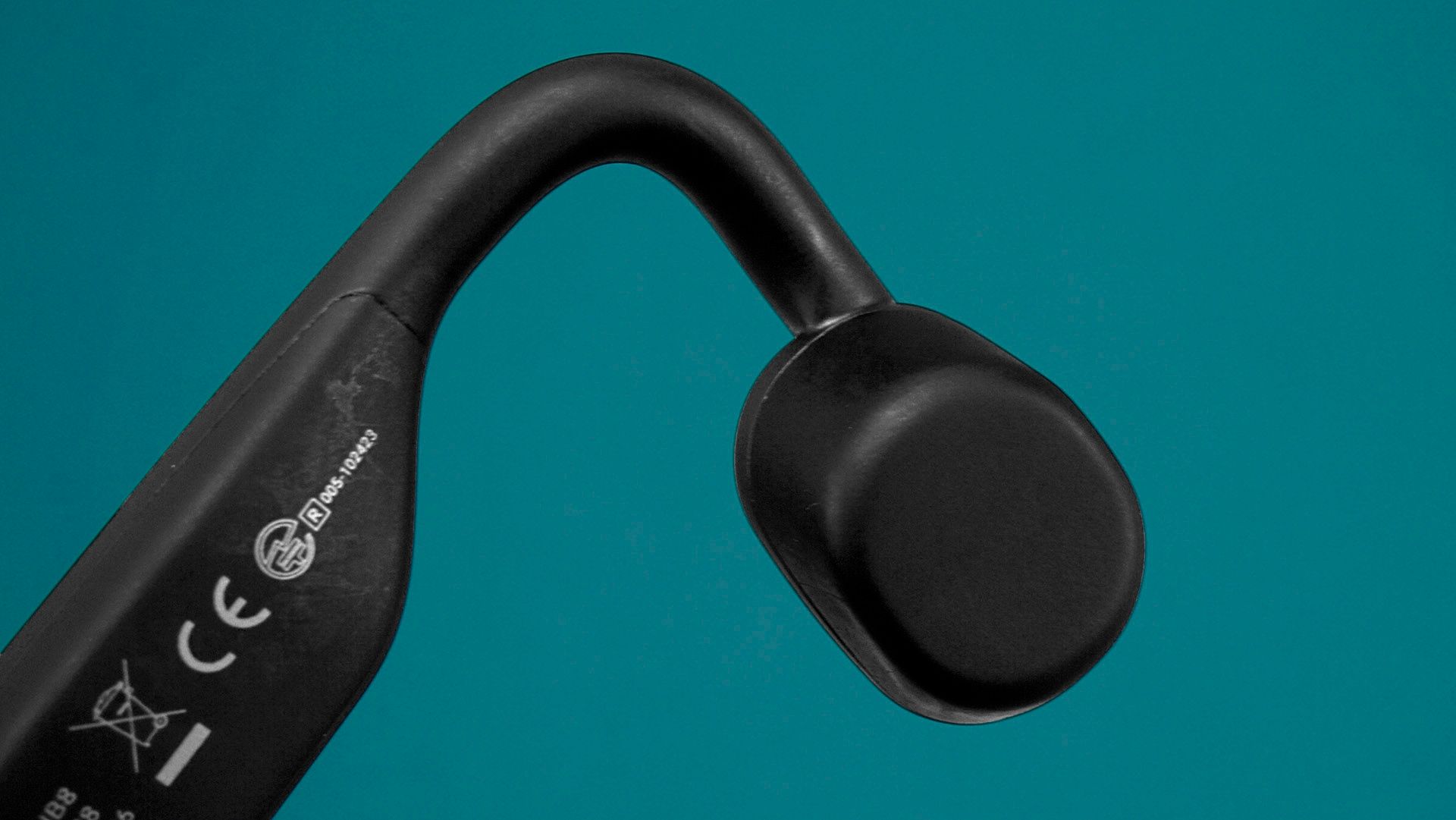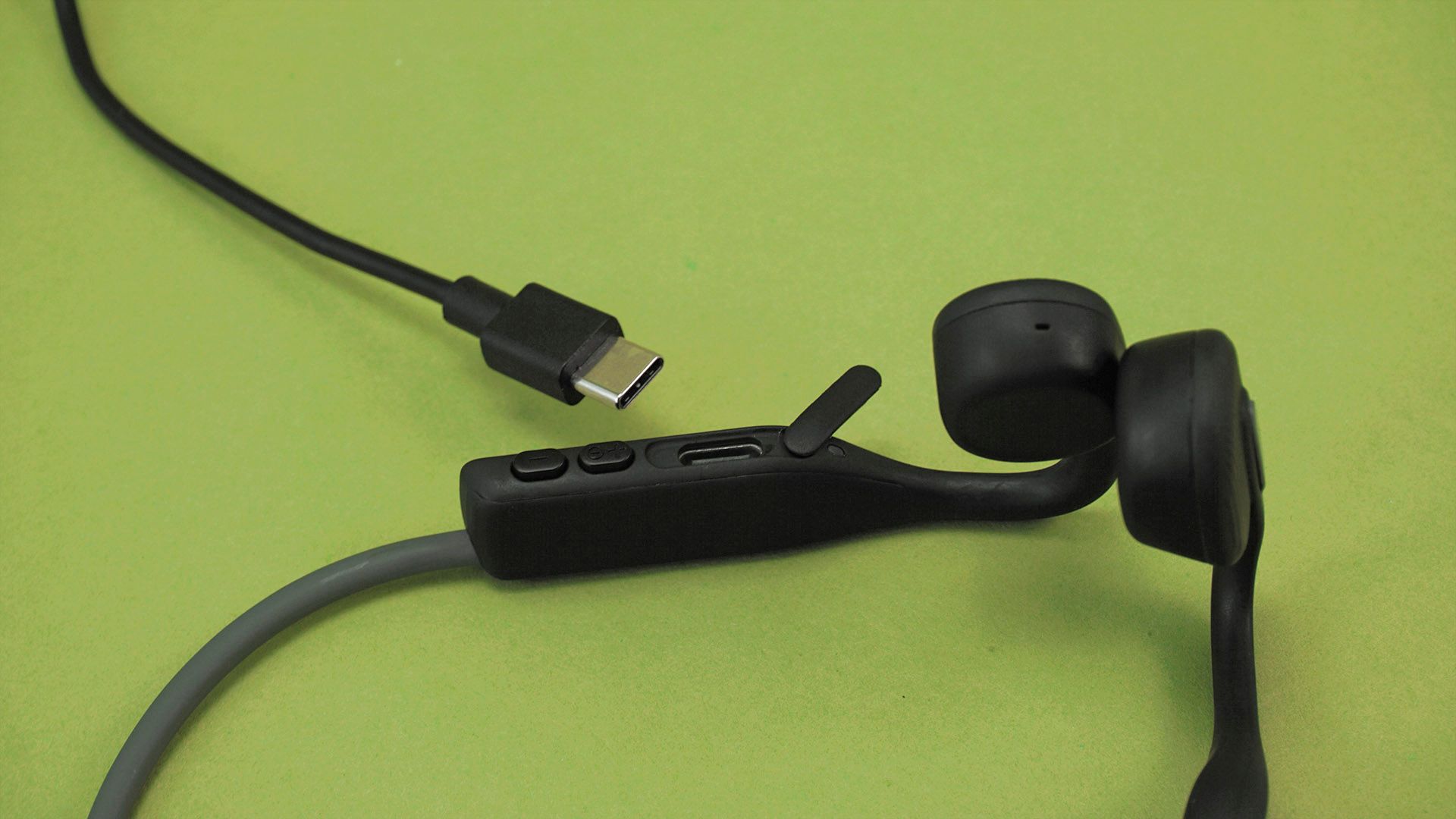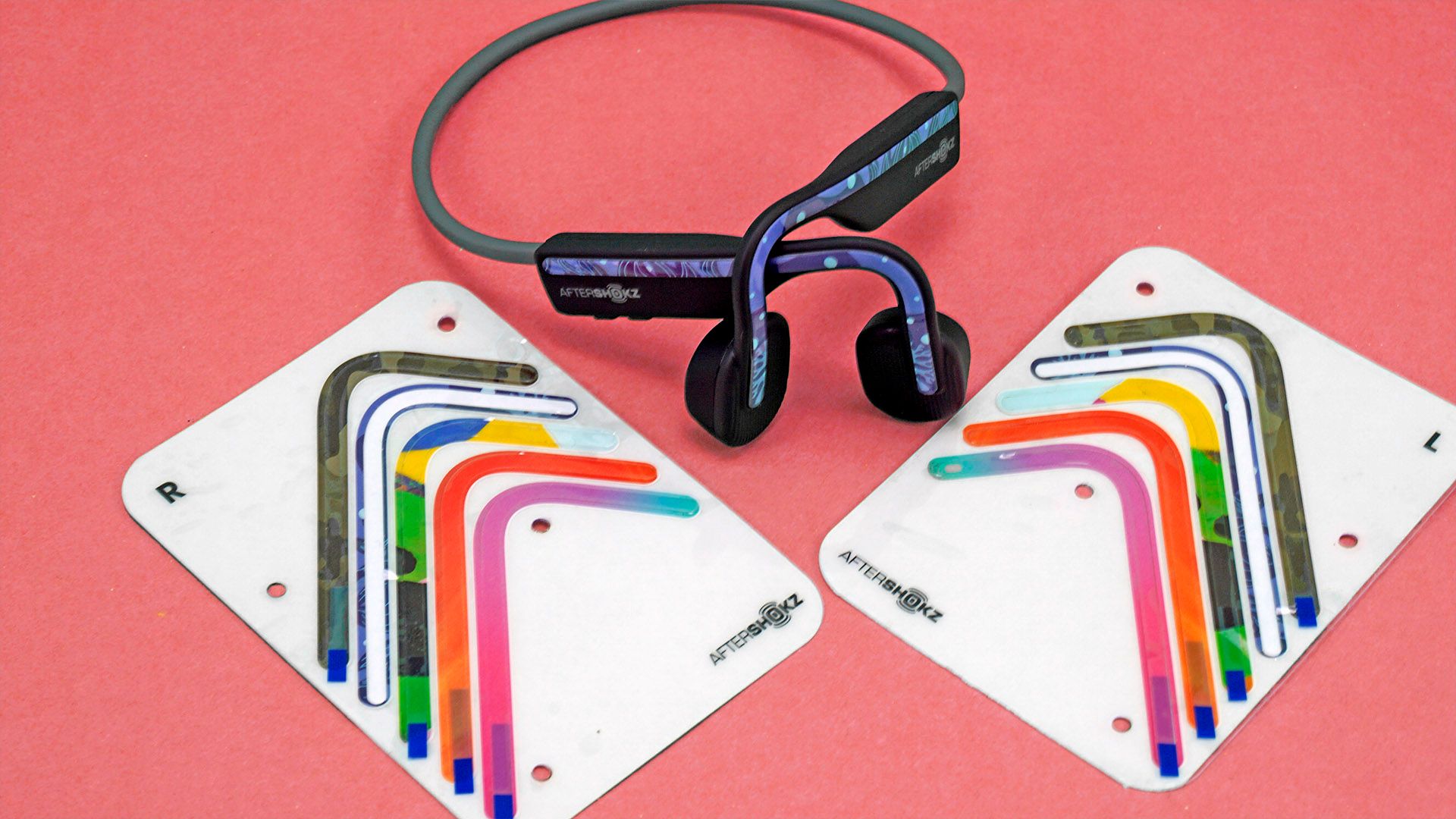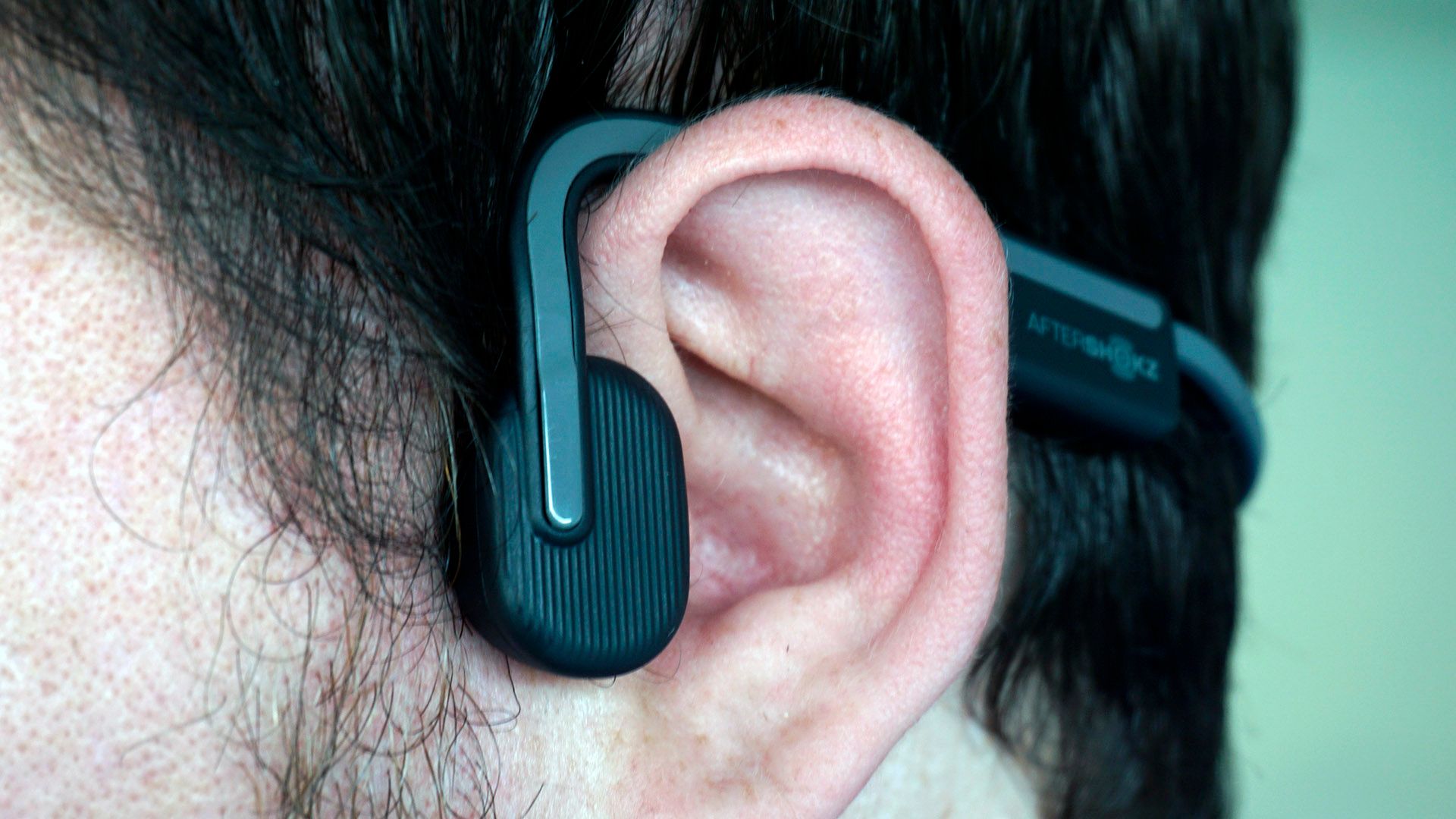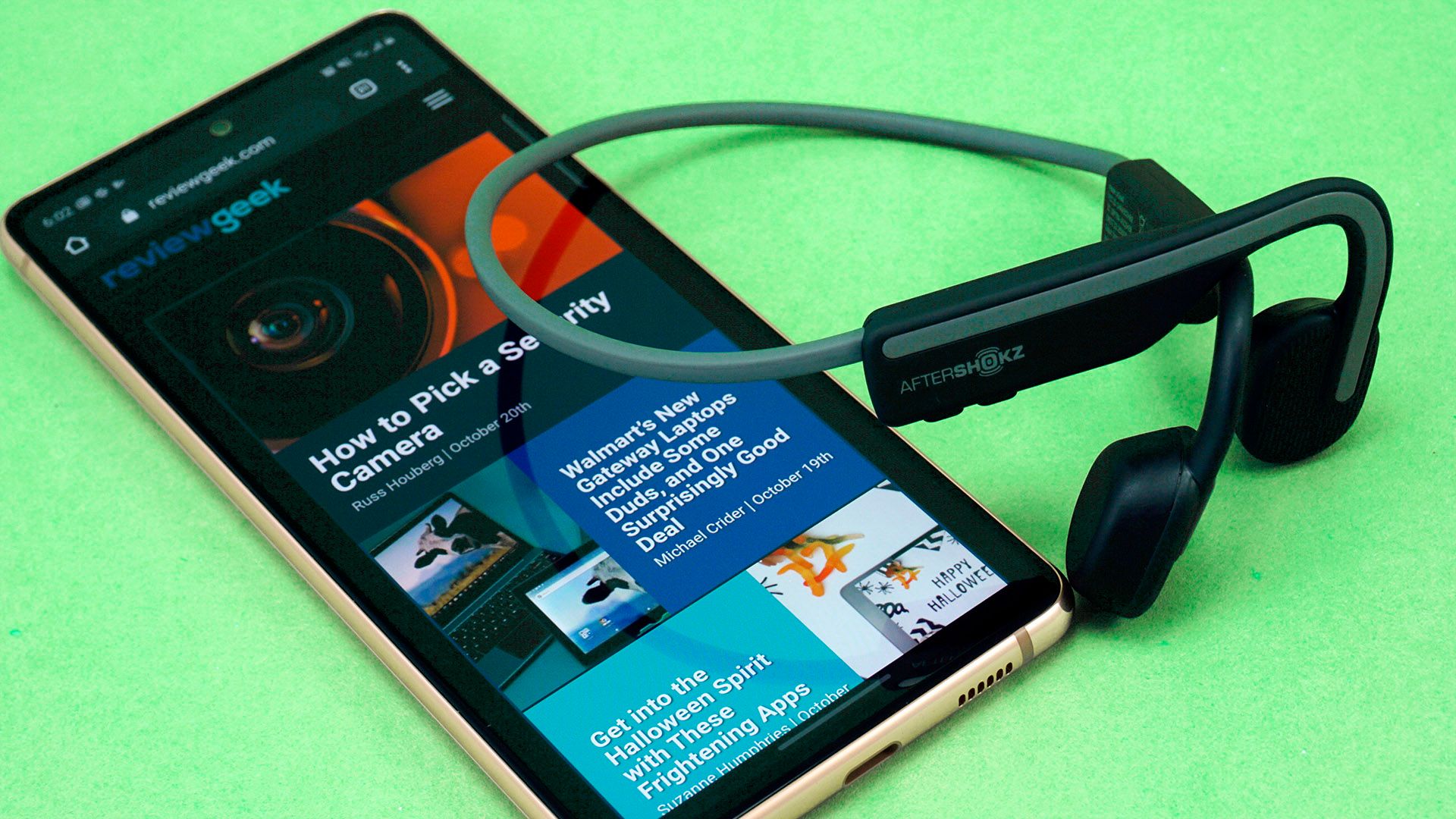If you haven't tried bone conduction headphones yet, you should: they're an excellent way to listen to music or the spoken word while keeping aware of your surroundings. AfterShokz is probably the best-known vendor of these gadgets, and it has a new mid-range set of Bluetooth headphones: the OpenMove.
This set is the cheapest currently sold by AfterShokz, but still a bit outside of impulse buy range at $100. But it's a notable improvement over the pair I've used for years, the Trekz Titanium, thanks to a few design tweaks and some solid design choices. If you don't need more advanced features, particularly swim-proof water resistance, it's an excellent purchase for anyone interested in the category.
Why Bone Conduction?
Before we get into the review, a brief primer. Bone conduction headphones let you listen to your audio while keeping your ears clear, able to hear the sounds around you without any impedance.
This is particularly useful while exercising---cycling or jogging near a busy road can be dangerous while wearing conventional headphones. Ambient sound heard through microphones isn't enough (and it sounds like crap if you're moving fast enough to get a breeze, anyway).
The OpenMove, like all bone conduction headphones, rests a vibrating transducer pad between the front of your ear and your temple, leaving your ear canal clear. It sends vibrations directly into the tiny bones of your inner ear, bypassing your eardrum itself and letting you hear everything around you with almost no interruption.
A Worthy Upgrade
The OpenMove uses AfterShokz's standard layout: a thin band, small pads for the transducers, volume up and down on the right "bulge" behind your earlobe, and a play/pause button on the left pad. There's a USB-C charging port hidden behind a silicone cover on the right side. After having used the Trekz Titanium for years, I was able to pick it up instantly, but even newcomers should find little to no learning curve.
The USB-C port is a huge upgrade here---I have kind of a thing about MicroUSB being used on new devices these days. It's especially notable on this newer, cheaper model as the more expensive AfterShokz Aeropex uses a proprietary adapter cable.
Other design choices are a bit odd. The play/pause button has gone from a big finger-friendly triangle shape to a small bar, integrated with the decorative strip that runs down the side. It's fine, but a little harder to find while I'm riding my bike. The package also included five pairs of stickers for placing on this strip, which I declined to apply---I'm not looking to turn heads with these headphones. Quite the opposite, in fact.
Otherwise, the headphones are pretty much the same as I remember. The band feels a little stronger than the silicone one on the Trekz Titanium---it seems like there's more sturdy metal in there. And I appreciate that three different equalizer settings are available via button commands, though no one's buying bone conduction headphones for amazing audio quality.
The OpenMove are IP55 water resistant, which means sweat or rain, but not swimming. To get more powerful water resistance, you'll need either the Aeropex ($160) or the standalone Xtrainerz ($150). (Only the latter is rated for full swimming immersion.) They seem to be improved in just about every way over the older AfterShokz Air---USB-C charging, Bluetooth 5.0, same battery life and water resistance---for $20 less.
Using the Headphones
Actually using the OpenMove is easy, once you've paired it the first time. Turn on the power, and it will automatically connect to up to two devices. The quality is acceptable, though nowhere near as clear as even a pair of cheap wired buds---but then that's not the point. Because I mostly listen to audiobooks and podcasts, it serves my purposes quite well. I was able to have hands-free phone calls without issue.
The headphones are quite light and comfy, much more so than the old Trekz Titanium design, thanks to fully flat transducers that sit flush with your skin. I found myself forgetting that I was wearing them even hours after putting them on. The silicone-wrapped band feels like a quality pair of glasses. That said, it might be tricky to use them while wearing glasses or a mask, but it's doable.
Sometimes, the OpenMove would die because the battery life is only six hours---not great when compared to the tiny batteries found in modern truly wireless earbuds. But thanks to that USB-C charging port, I was never in want of a cable for a quick boost.
If you plan to use bone conductive headphones around others on a regular basis (and you might want to because the ability to hear through your regular ears is addictive), be aware that they can be quite noisy. People standing close to you, say, in a line at the bank, will be able to hear some of the sound they make. They're not boom boxes, and less obnoxious than, say, full-sized open-back headphones. But I found myself lowering the volume when I had to be around others.
A Worthy Investment
I've gotten to the point where the OpenMove are my most-used set of headphones, outside of the full around-the-ear set I use when I'm at my desk. They're that convenient and comfy. The ability to clearly hear what's around me has only become more important as we've all had to contend with social distancing.
Were I to change anything on this set, it would be a slightly longer battery life and a play/pause button. But those are relatively minor quibbles. If you're looking to get into bone conduction headphones and you don't need a set that's completely waterproof, the AfterShokz OpenMove should be your first choice.
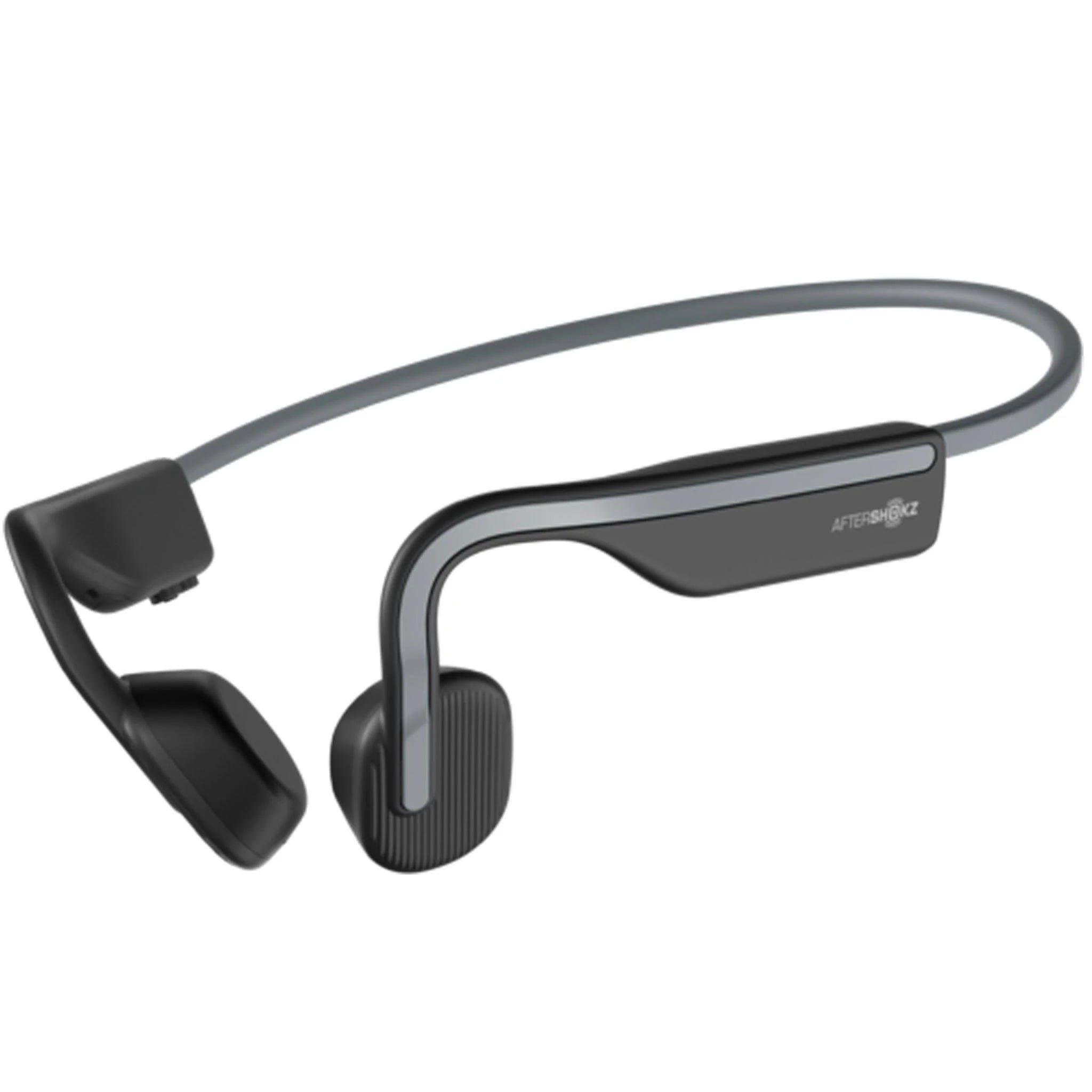
AfterShokz OpenMove Bone Conduction Headphones
- Easy operation
- Comfy for long periods
- USB-C charging
- Water resistance
- Battery life could be better
- Stickers are pretty useless
- Play button is small and skinny

